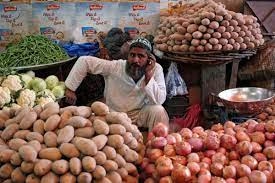The U.S. economy grew at a robust 3% annual rate in the last quarter, according to the Commerce Department’s revised estimate released on Thursday. This upgrade from the initial 2.8% assessment highlights strong consumer spending and business investment as key drivers of growth.
The second-quarter expansion marked a significant acceleration from the 1.4% growth rate recorded in the first quarter of 2024. Consumer spending, which represents about 70% of U.S. economic activity, increased at a 2.9% annual rate, up from the previously reported 2.3%. Business investment surged at a 7.5% rate, with equipment investment jumping by 10.8%.
This report reflects an economy that remains resilient despite the pressures of sustained high interest rates. As the November presidential election approaches, the state of the economy is a crucial factor for voters, many of whom are still frustrated by high prices despite a notable decline in inflation since its peak in mid-2022. However, recent surveys by the Conference Board and the University of Michigan have shown a rise in consumer confidence.
“The GDP revisions show the U.S. economy was in good shape in mid-2024,’’ said Bill Adams, chief economist at Comerica Bank. “Solid growth of consumer spending propelled the economy forward in the second quarter, and the increase in consumer confidence in July suggests it will drive growth in the second half of the year as well.”
The latest GDP figures for the April-June quarter also indicate that inflation continues to ease while remaining slightly above the Federal Reserve’s 2% target. The central bank’s preferred inflation gauge, the personal consumption expenditures index (PCE), rose at a 2.5% annual rate last quarter, down from 3.4% in the first quarter. Core PCE inflation, which excludes food and energy prices, grew at a 2.7% rate, down from 3.2% earlier in the year.
A GDP category that measures the economy’s underlying strength—excluding volatile elements like exports, inventories, and government spending—rose at a 2.9% annual rate, up from 2.6% in the first quarter.
To combat rising prices, the Federal Reserve raised its benchmark interest rate 11 times in 2022 and 2023, bringing it to a 23-year high. This helped bring down annual inflation from a peak of 9.1% to 2.9% as of last month. Despite concerns that higher borrowing costs could trigger a recession, the economy has continued to grow, and employers have kept hiring.
With inflation now hovering just above the Fed’s 2% target, Chair Jerome Powell has suggested that the central bank may soon start lowering interest rates. This potential shift, expected at the Fed’s mid-September meeting, would aim to achieve a “soft landing,” balancing inflation control with maintaining a healthy job market and avoiding a recession.
While the job market has shown some signs of weakening—with the unemployment rate rising to 4.3% over the past four months and a decline in job openings and hiring—conditions remain relatively strong.
The Commerce Department will issue its final estimate of GDP growth for the April-June quarter late next month.



